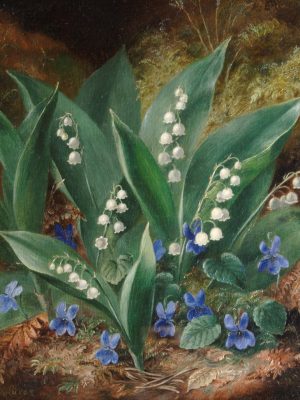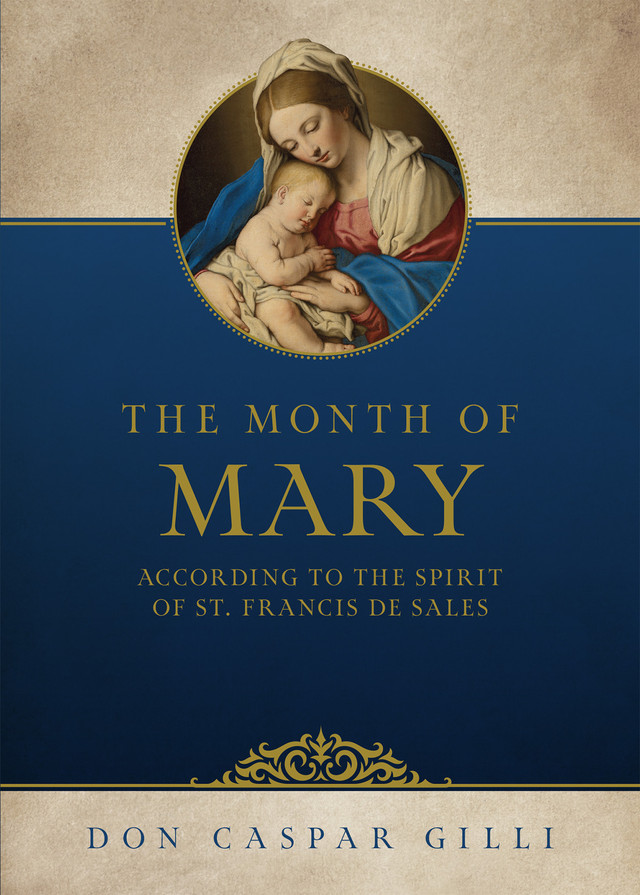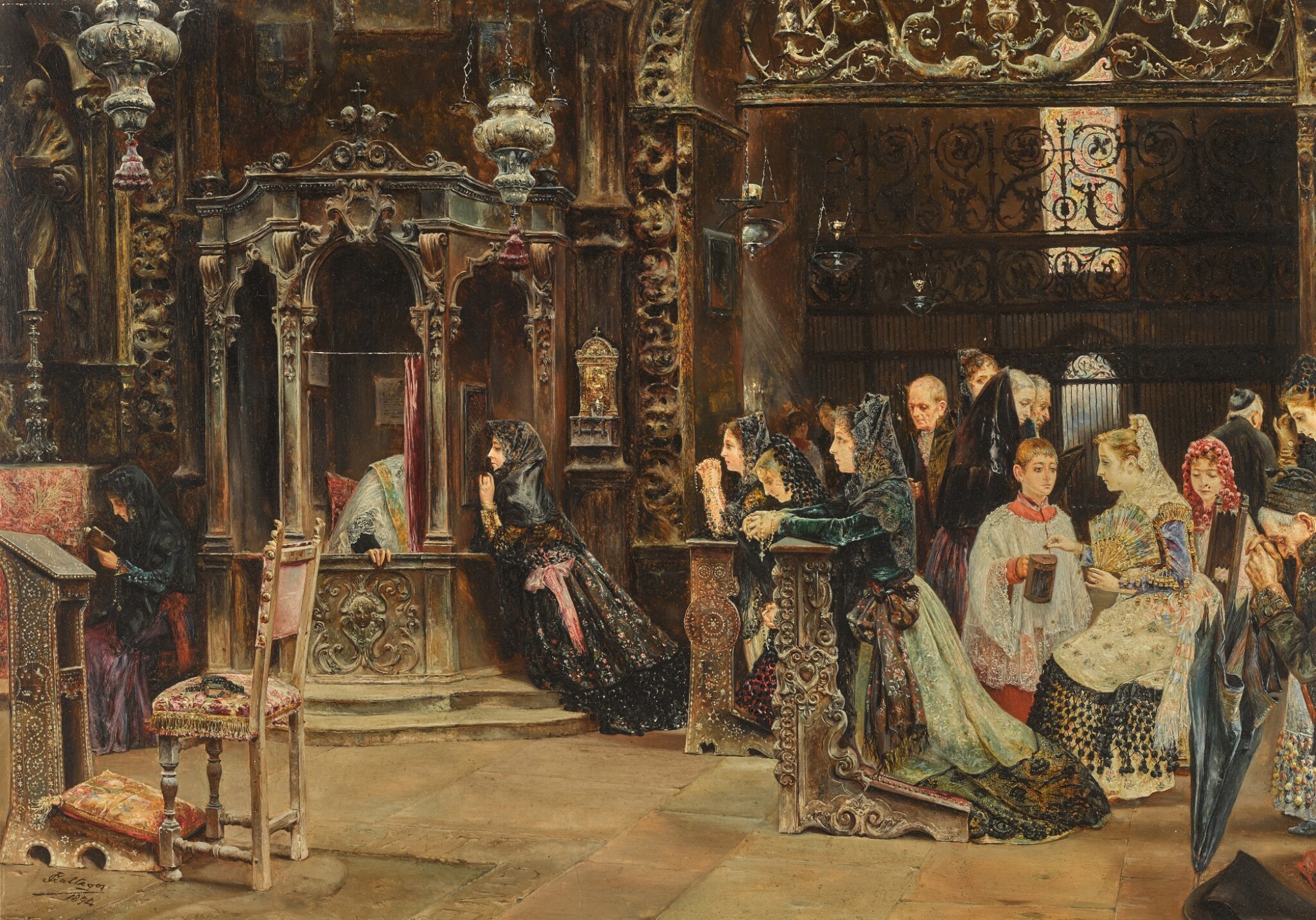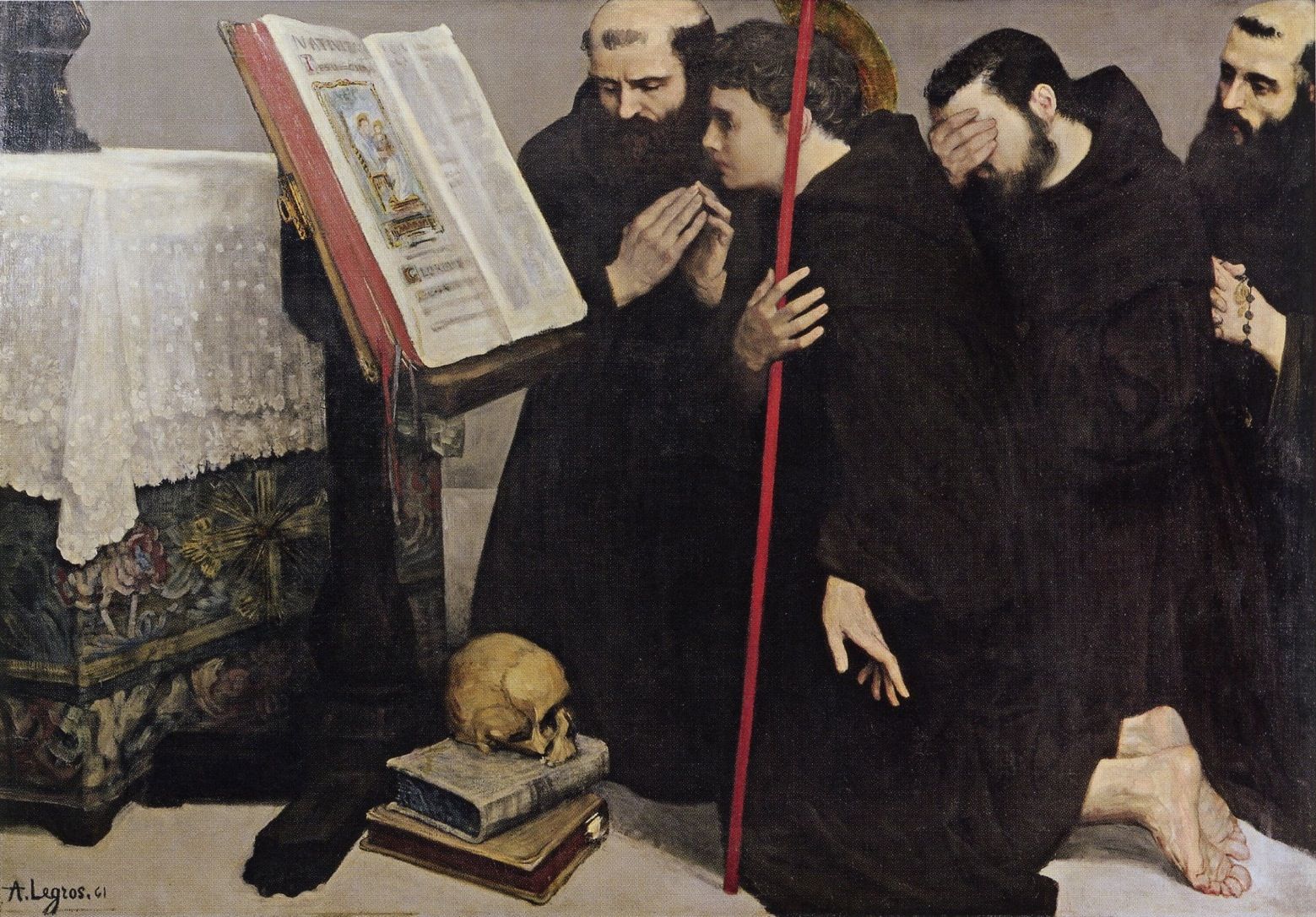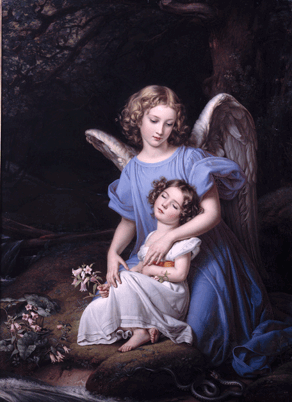This reflection invites us to see the Heart of Mary as a fragrant garden where the virtues of humility, chastity, and charity blossom for us to imitate. It beautifully connects the origin of the Rosary to a crown of spiritual roses offered to Mary, encouraging us to pray humbly and lovingly like the saints. The closing prayer reminds us to ask Mary for the grace to love Christ deeply and to grow in virtue through her help.
Spiritual Flowers
Jesus Christ built His throne upon the ruins of the world. Before the fruits of grace can be gathered the flowers of prosperity must fall.
The present moment’s grace may be that which will decide our eternity.—Nepveu.
The Heart of Mary is a garden of delights, in which we can gather the most precious fruits. This most beautiful garden is closed against the impure spirit; it is full of Divine perfumes, cultivated by a Heavenly Hand, and adorned with the most charming flowers of virtue. Of these there are three which particularly attract our admiration, and fill the house of God with the sweetest fragrance—they are the violet of humility, the lily of chastity, and the rose of charity.—St. Bernard.
The less you seek after praise and your own interests, the more do you deserve to be praised and rewarded by God.
EXAMPLE
Origin of the Rosary
The Rosary of the Blessed Virgin Mary in its present form was instituted by St. Dominic. But as early as the year 1094 Peter the Hermit had invented a kind of rosary of beads of wood, upon which the Crusaders, who were generally uneducated men, recited a certain number of Paters and Aves, varied according to the solemnity of the feasts.
Historians also relate that even before that time pious persons were in the habit of reciting a series of Paters and Aves upon knotted cords. In the East it was the custom to present crowns of roses to persons of distinction. St. Gregory Nazianzen, moved by ardent piety towards the Mother of Our Redeemer, offered to her, instead of a material crown of roses, a spiritual crown of prayers. It consisted of a long string of the highest praises and most glorious titles and excellent prerogatives of Mary.
St. Bridget, Patroness of Ireland, who lived in the fifth century, developed this pious idea of St. Gregory by substituting for those prayers which were unknown to the people the more popular and more beautiful prayers of the Credo, the Pater, and the Ave Maria. And to regulate the number of prayers to be recited, the Saint adopted the method of the anchorets of threading beads of stone or of wood together in the form of a crown or chaplet.
The word ‘Rosary’ signifies a crown of roses, and the prayers, the expression of the heart’s affections, of which it is composed, are spiritual roses with which we adorn the head of our dear Blessed Mother.
It is said that a holy solitary was watching one day a poor old woman reciting her rosary with great devotion, when he observed an Angel by her side holding a golden thread, upon which he strung a rose for every Ave, and a lily for every Pater; afterwards he placed this garland in the form of a crown upon the head of the old woman, and disappeared, leaving behind him a sweet fragrance of roses. This fragrance was often perceived in former days in churches, after the recital of the Rosary.
Prayer.—O Mary, my good Mother! obtain for me an ardent love for your Divine Son, my Saviour Jesus Christ. From Him you can obtain all that you desire; obtain, then, for me the grace to be always so united to the Divine Will that I may never again be separated from it. I ask you not, my Mother, for earthly goods, nor honours, nor riches; but I ask of you that which you have much more at heart, the grace to love my God. Is it possible that you should refuse to assist me in a work which is so agreeable to you? No; you will help me, my good Mother—you will pray for me. Pray then, O Sacred Virgin, and cease not to pray for me, until you see me in heaven, out of danger of losing my God, and certain of loving Him throughout eternity. May I be able to thank Him for ever, with you, my good and charitable Mother, for so great a mercy. Amen.
Aspiration.—Make me like unto you, O Mary, who were so sweet and humble of heart.
Practice.—Make an act of external humility in union with Mary.
ooo
This article is taken from a chapter in The Month of Mary According to the Spirit of St. Francis de Sales by Don Caspar Gilli which is available from TAN Books.


